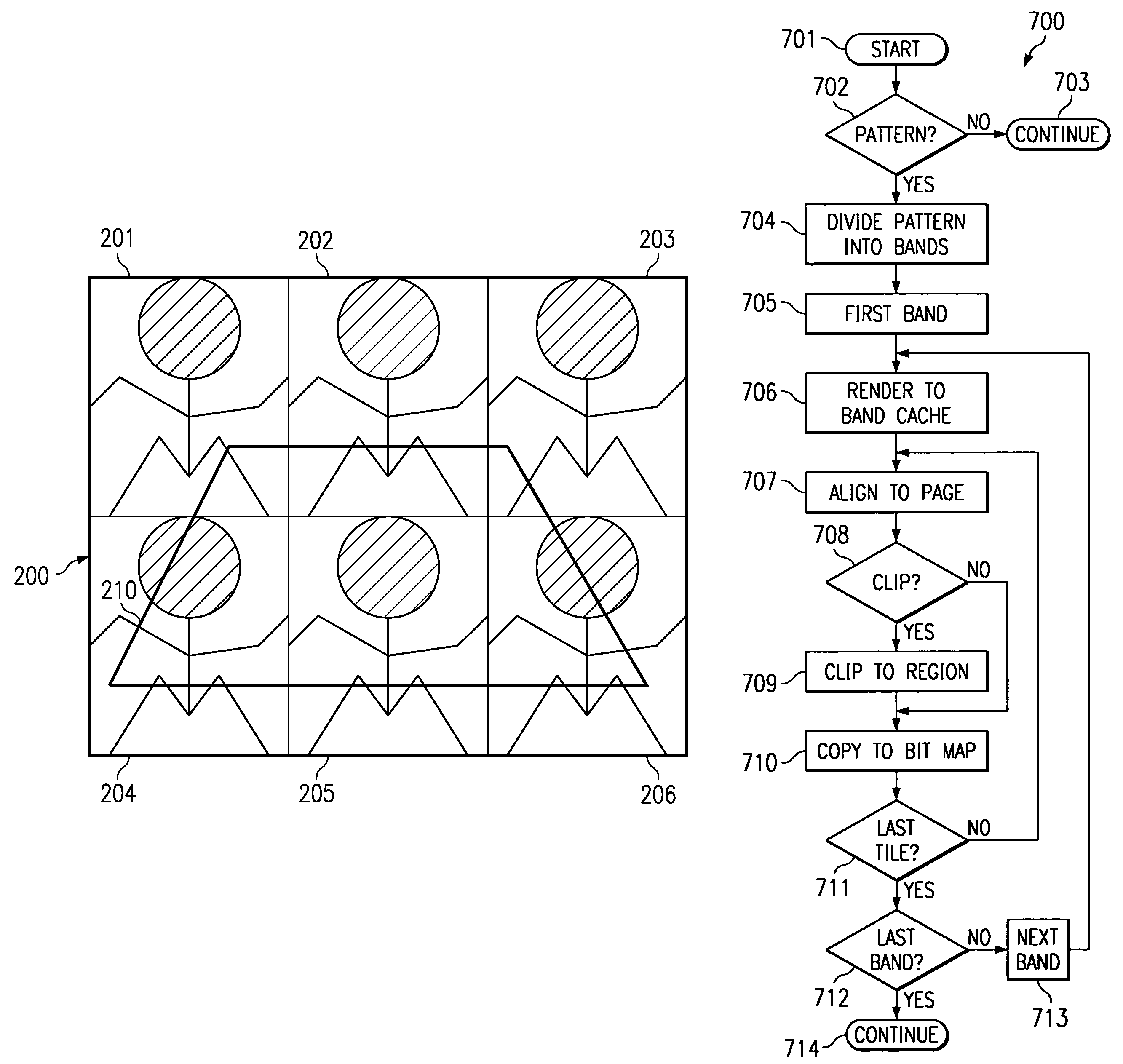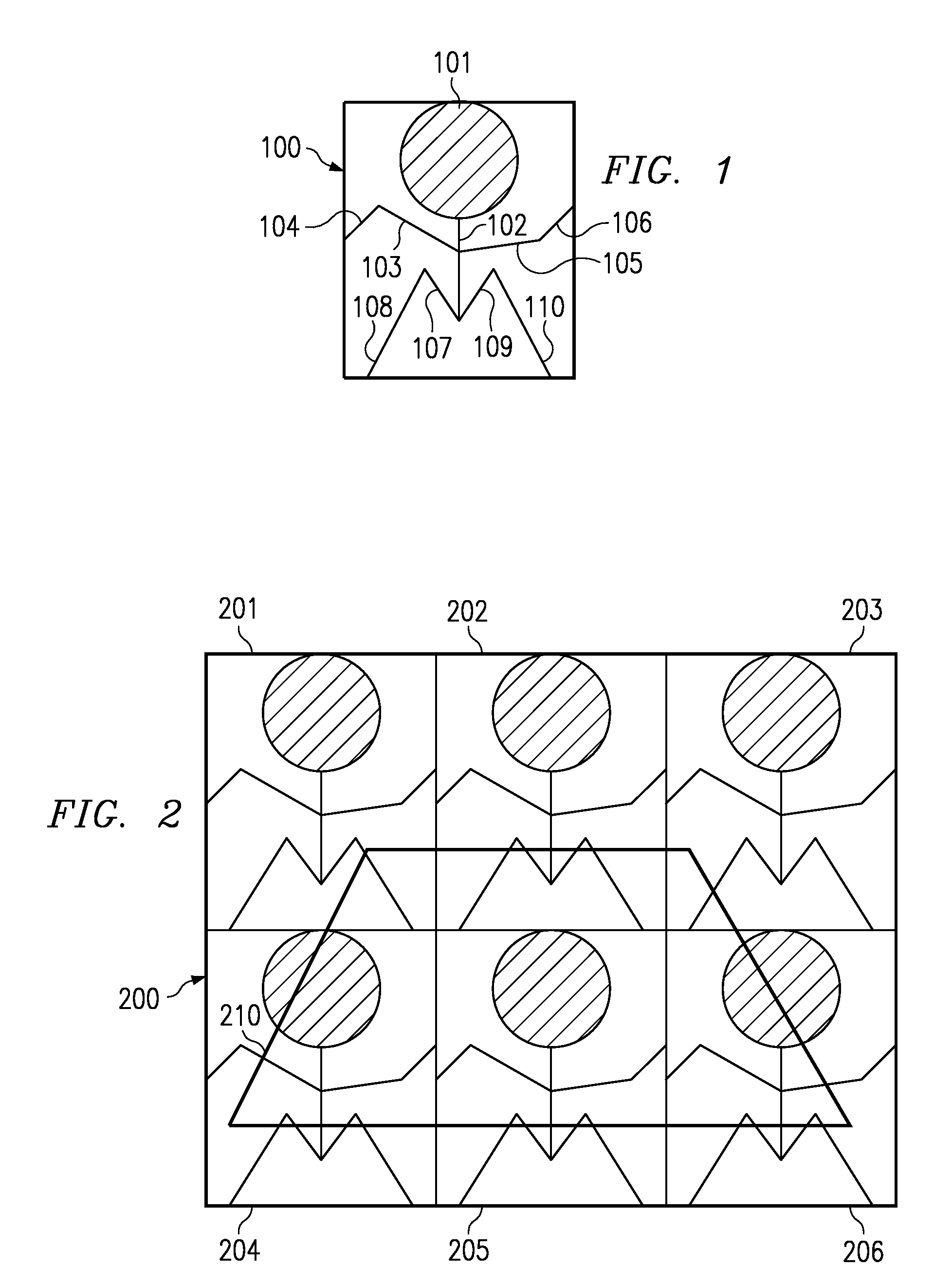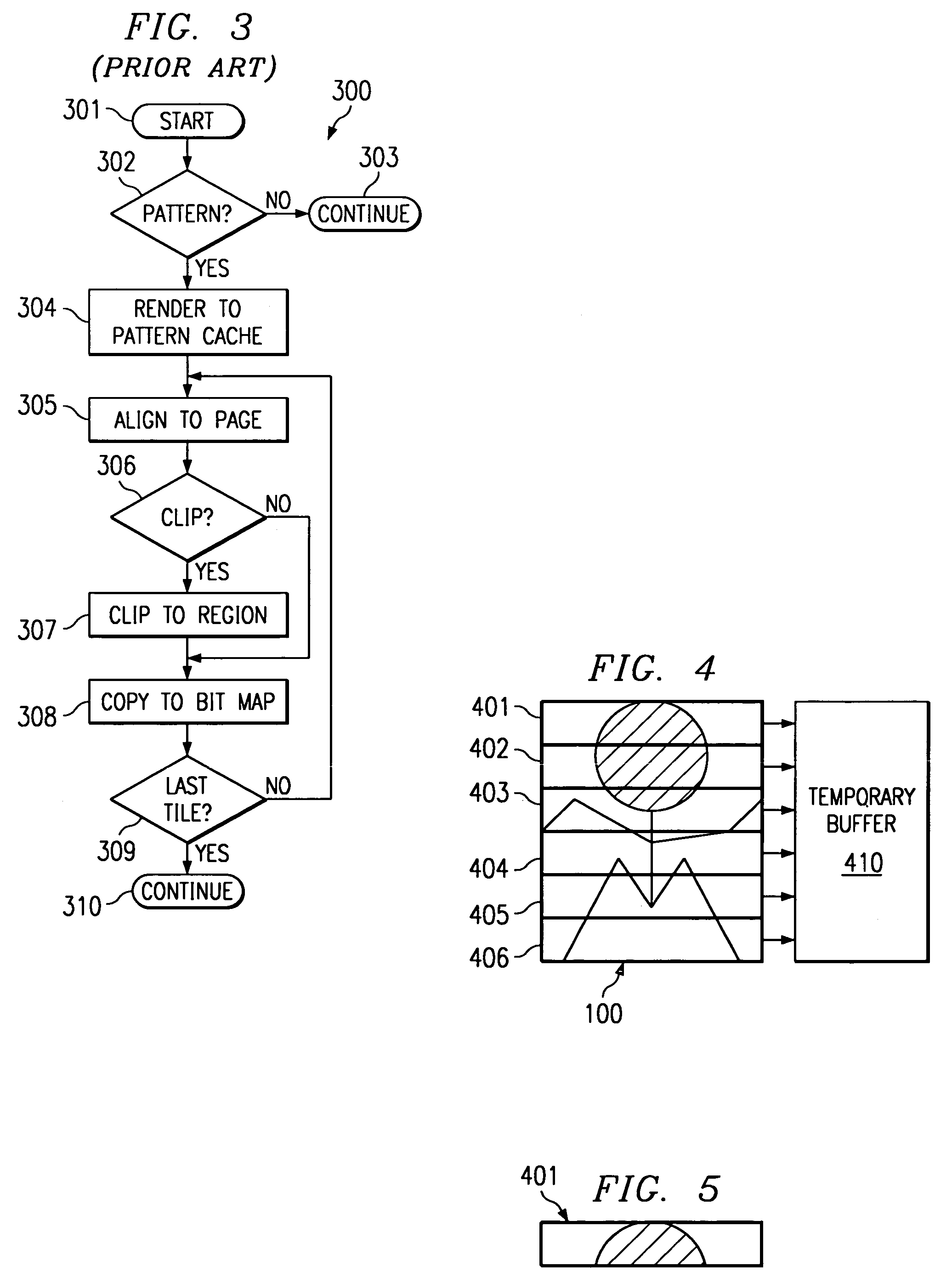Method and apparatus for rendering large patterns in a small memory printer
a printer and memory technology, applied in the field of printing control, can solve the problems of large amount of memory required, poor quality, and inability to store large patterns in pattern caches at high resolution, and achieve the effects of shortening the software development of the printer, increasing user satisfaction with the printer, and increasing the complexity of the pag
- Summary
- Abstract
- Description
- Claims
- Application Information
AI Technical Summary
Benefits of technology
Problems solved by technology
Method used
Image
Examples
first embodiment
It is necessary to translate these pattern coordinates to page coordinates for the later rendering operation (processing block 807). In a first embodiment, the data processor operating the printer creates a display list element for each tiling of the pattern. This is the easiest to do with a memory extension of the display list interpreter. Upon each instance of processing block 804, subroutine 800 selects the next instance of the pattern display list.
[0050]In a second embodiment, operation of a display list interpreter performing the rendering operation is augmented to include elementary control functions. These new elementary control functions increment the pattern step and call the pattern within loops or nested loops. This second embodiment requires less external memory than the first embodiment because multiple copies of the pattern display list are not required. However, this second embodiment would increase the complexity of the display list interpreter. This will typically r...
third embodiment
[0059]A third embodiment defines a new opcode that consumes the pattern display list. This new opcode has the following format:[0060]Pattern to region opcode[0061]Number of parameters[0062]Pointer to region[0063]Pointer to pattern subroutine
When the display list interpreter encounters the pattern fill display list element, it surrenders control to a surrogate that computes the parameters for each display list element in the pattern subroutine based on the pattern step and clipping region. The surrogate would then“call” the particular opcode in sequences with the parameters passed in the same manner as a normal display list interpreter. The interpreter that builds the display list can make the parameters relative to the pattern step values and the same opcodes can be used for both normal rendering and pattern subroutines.
[0064]FIG. 9 is a block diagram of a network printer system 900 including a multiprocessor integrated circuit 910 constructed for image and graphics processing accor...
PUM
 Login to View More
Login to View More Abstract
Description
Claims
Application Information
 Login to View More
Login to View More - R&D
- Intellectual Property
- Life Sciences
- Materials
- Tech Scout
- Unparalleled Data Quality
- Higher Quality Content
- 60% Fewer Hallucinations
Browse by: Latest US Patents, China's latest patents, Technical Efficacy Thesaurus, Application Domain, Technology Topic, Popular Technical Reports.
© 2025 PatSnap. All rights reserved.Legal|Privacy policy|Modern Slavery Act Transparency Statement|Sitemap|About US| Contact US: help@patsnap.com



